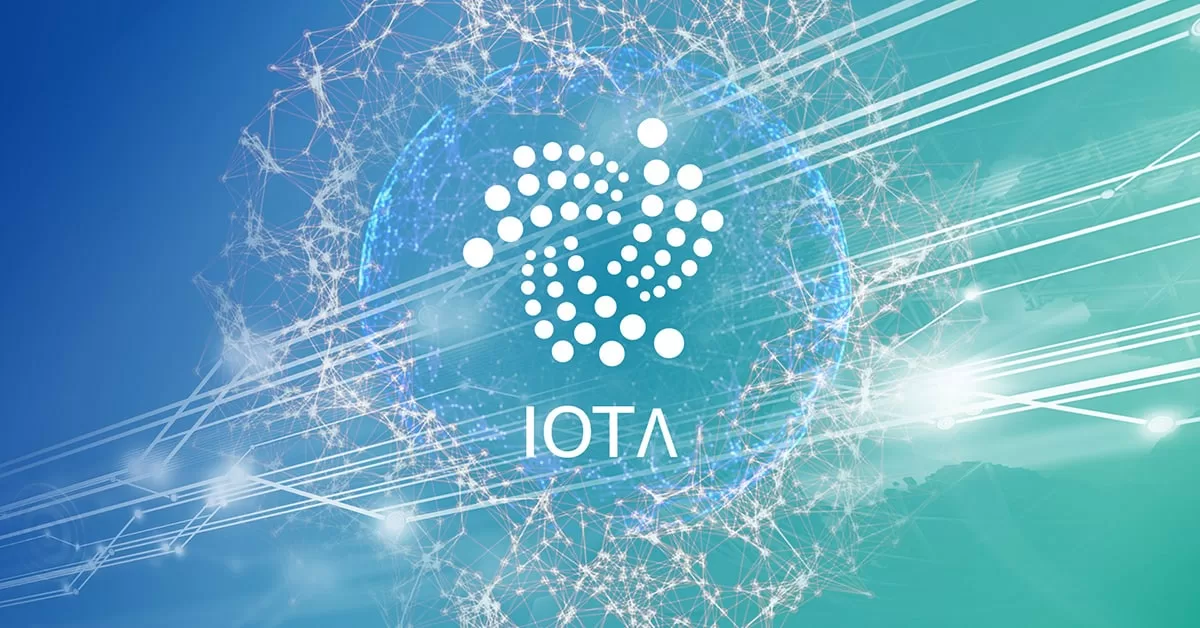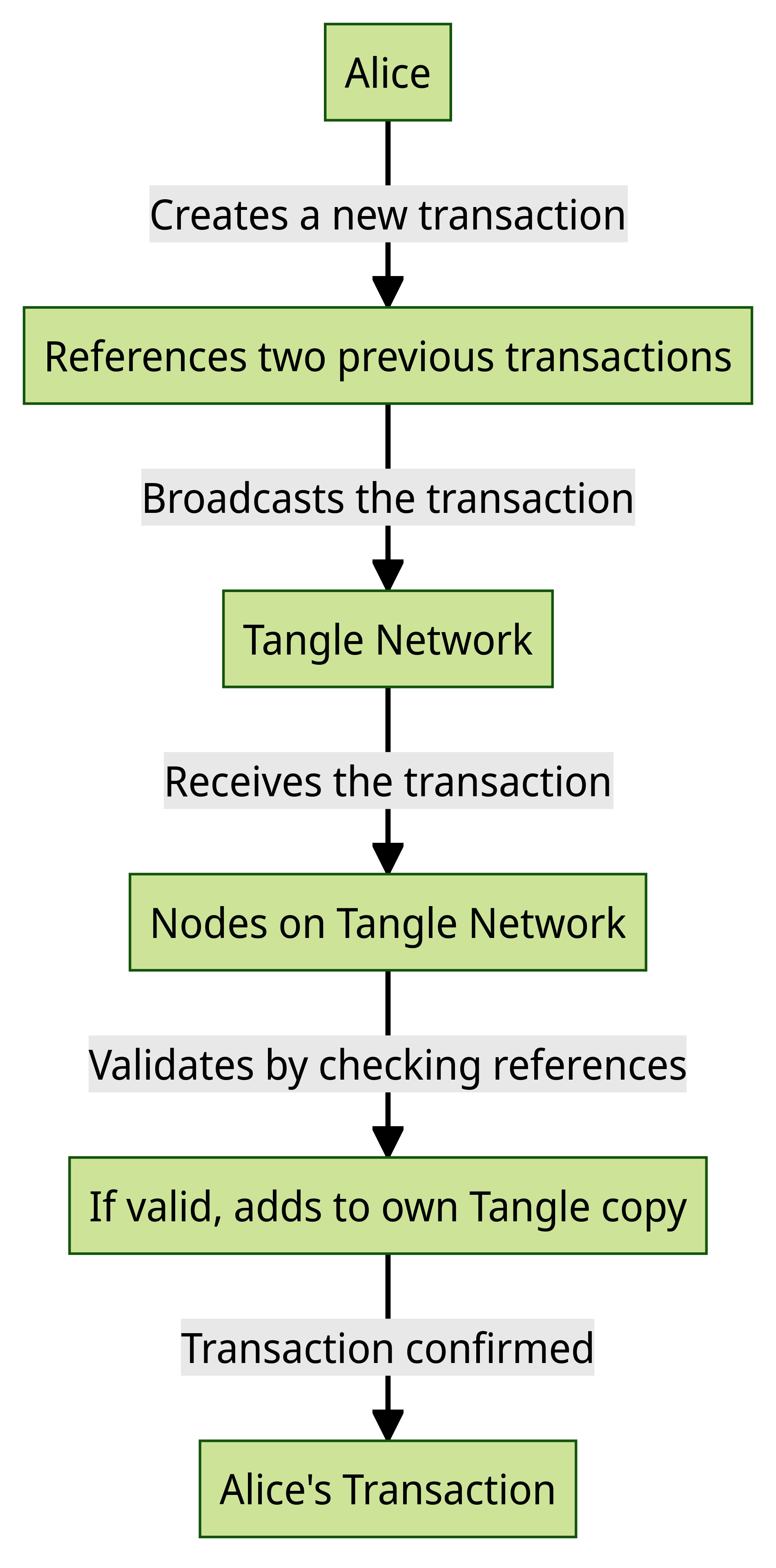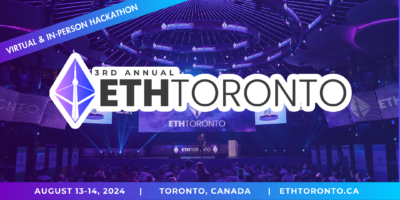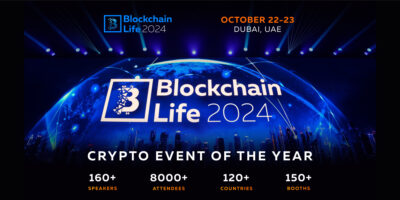The tangle, IOTA’s directed acyclic graph (DAG) architecture, offers a promising scalable and efficient alternative to traditional blockchain consensus mechanisms. As the Internet of Things (IoT) grows, micropayments and interconnected devices become more prevalent, requiring a distributed ledger capable of high transaction throughput. In this post, we’ll explore how the tangle leverages DAGs to achieve decentralized consensus and scalability.

Why Traditional Blockchains Struggle with Scale
Blockchains like Bitcoin and Ethereum bundle transactions into blocks, with each new block cryptographically linked to the previous one in a chain. This sequential structure limits transaction throughput to the block size and creation rate. As more users join the network, competition for the limited space within blocks increases, driving up transaction fees and confirmation times. Additionally, proof-of-work consensus used by many blockchains requires vast amounts of computing power to validate transactions and secure the network.
While various solutions aim to improve blockchain scalability, fundamental constraints remain due to their underlying data structure and consensus mechanisms. This has motivated research into alternative distributed ledger architectures for building highly scalable, decentralized networks.
Introducing the Tangle and Directed Acyclic Graphs
IOTA’s tangle represents a significant departure from classical blockchains. Rather than a linear chain of blocks, the tangle is a directed acyclic graph (DAG) data structure. Transactions are represented by vertices on the graph, linked to each other rather than sequenced into blocks.
To issue a new transaction, the user must validate two previous transactions by performing a small proof-of-work calculation. These approvals are represented by directed edges, confirming that the issued transaction references and verifies the validity of the two earlier transactions. Over time, transactions become interlinked, forming a network of approvals that provides consensus.
This DAG structure allows the tangle to scale horizontally as new transactions join the network. Because users verify previous transactions, more transactions means more confirmations and improved security. There are no fixed block sizes or intervals that restrict throughput. The more activity on the network, the faster transactions are confirmed.
Key Properties of the Tangle (DAG)
Some key features that enable the tangle to function as a scalable, decentralized cryptographic ledger:
- Asynchronous consensus – Rather than sequential blocks, transactions reach probabilistic finality through a random walk of approvals across the DAG. This allows high throughput without bottlenecks.
- No transaction fees – Users verify transactions to issue their own, so there are no costs to submit transactions. This enables micropayments and frequent transactions between IoT devices.
- Decentralized security – The larger the network grows, the more transactions are verified and validated. More users means better distributed security.
- Scalable throughput – Transactions per second increase with network activity due to the parallelized validation process. There are no block size limitations.
Tangle is a type of DAG that is used in the IOTA cryptocurrency network
IOTA and its Tangle technology offer a scalable distributed ledger architecture suitable for a wide range of applications:
- Internet of Things (IoT) – Enabling machine-to-machine micropayments and providing trusted data transfer between devices. Examples include electric vehicle charging, supply chain tracking, and wireless sensor networks.
- Smart Cities – Improving efficiency and transparency of public services through connected device networks. Applications like smart waste management, pollution monitoring, and smart parking.
- Digital Identity – Allowing users to own and control their personal data and identity on a decentralized network.
- Financial Services – Providing infrastructure for frictionless micropayments, as well as settlement of tokenized assets across ledgers.
- Healthcare – Securely share and audit medical records, enable access to medical IoT sensor data, and integrate with smart healthcare systems.
Adoption of IOTA’s Tangle is still in early stages, but its scalability, feeless transactions, and lightweight protocol offer unique advantages over traditional blockchains for IoT and machine economy applications. Some companies already exploring use cases include Dell, Intel, TM Forum, Norway’s largest bank DNB, and energy software company Grid+. With improving network effects and maturing technology, enterprise and public sector adoption is positioned to accelerate.
How Directed Acyclic Graphs (DAG) and the Tangle work?
A Directed Acyclic Graph (DAG) is a data structure that consists of nodes and edges, where each edge is directed from one node to another and there are no cycles. This means that it is impossible to start at a node and follow the edges to get back to the same node.
DAGs are often used to represent data that has a natural ordering, such as a task dependency graph or a timeline. For example, a task dependency graph could be used to represent the order in which a set of tasks must be completed.
The Tangle is a type of DAG that is used to store and process transactions in the IOTA cryptocurrency. The Tangle consists of transactions, which are represented as nodes, and edges, which connect transactions together.
When a new transaction is added to the Tangle, it must reference two previous transactions. This process of validating two previous transactions is called “proof-of-work” (PoW). PoW helps to secure the Tangle by making it difficult to add invalid transactions.
Once a transaction is added to the Tangle, it is considered to be confirmed. The more transactions that are added to the Tangle, the more secure each transaction becomes.
Here is a simplified example of how the Tangle works:
- Alice wants to send 10 IOTA to Bob.
- Alice creates a new transaction and references two previous transactions.
- Alice broadcasts the transaction to the Tangle network.
- Other nodes on the Tangle network receive the transaction and validate it by checking that it references two previous transactions.
- If the transaction is valid, the nodes add it to their own copy of the Tangle.
- Alice’s transaction is now considered to be confirmed.

The Tangle has a number of advantages over traditional blockchains, including:
- Scalability: The Tangle is designed to be scalable to handle a large number of transactions per second.
- Feeless: There are no transaction fees on the Tangle.
- Secure: The Tangle is secured by the PoW process.
However, the Tangle is still under development and there are some challenges that need to be addressed, such as the risk of spam transactions and the need to improve the performance of the network.
Overall, DAGs and the Tangle are promising technologies with the potential to revolutionize the way that transactions are processed.
Conclusion
The tangle represents an evolution in distributed ledger technology, overcoming key scalability limitations of conventional blockchains by using a DAG-based structure. This allows it to efficiently handle a high volume of transactions, making it well-suited for enabling micropayments and machine interactions in the Internet of Things. As blockchain applications continue to be explored, DAG architectures like the tangle provide an intriguing new direction for building truly decentralized and scalable transaction networks.
To summarize:
- The tangle uses a DAG rather than linear blockchain, allowing greater scalability
- Transactions validate 2 previous ones, enabling asynchronous consensus
- No miners or transaction fees enables micropayments for IoT
- More users improves security and throughput due to interlinked validations
- Lack of fees and high throughput make it ideal for machine-to-machine transactions
- DAG structure resolves scalability issues of traditional blockchains







